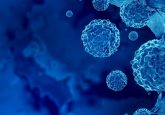Novel drug-delivering aptamers target cancer stem cells with double punch

Drug-delivering aptamers that can precisely target leukemia stem cells with enhanced potency have been developed.
Delivering anticancer drugs with specificity and potency to cancer stem cells is an increasing focus of leukemia therapeutic research and development, yet minimizing off-target toxicities remains a challenge. Now, researchers from the University of Illinois Urbana-Champaign (IL, USA) have developed drug-carrying DNA aptamers that can precisely target leukemic stem cells (LSCs), delivering a cytotoxic ‘double punch’.
High rates of relapse are often seen in leukemia and other blood cancers due to the presence of LSCs, which can evade chemotherapy. These LSCs can retreat to the bone marrow, where they can later proliferate and migrate, leading to persistent relapse.
“It’s important in leukemia, lymphoma or other blood cancers that we actually target and eliminate these stem cells, because as long as any are remaining, they can cause relapse and secondary cancers,” commented first author Abhisek Dwivedy.
Many biomarkers displayed on the surface of cancer cells are also expressed on healthy cells; therefore, targeting a single biomarker can often cause off-target toxicities. As a result, it has been suggested that for increased efficacy and decreased toxicity, leukemia therapeutics must target combinations of LSC biomarkers.

AACR 2025: Top picks from the Program Chairs
AACR Program Chairs Lillian Siu and Matthew Vander Heiden discuss the key themes and their top picks and tips for the conference.
Considering this, the researchers selected DNA aptamers – single-stranded DNA that can bind to protein targets – specific to two biomarkers on acute myeloid LSCs: CD117 and CD123. These biomarkers could be targeted with their Designer DNA-Architecture (DDA)-based platforms, which arrange the aptamers into precise desired patterns that differentiate targets from non-targets.
The aptamers were then loaded with the anticancer drug daunorubicin to develop a DDA-drug conjugate (DDA-DC), allowing the aptamers to carry the drug to their target cells and release it once inside. “This is especially important for drugs like daunorubicin, because the drug on its own cannot cross the cell membrane easily. But aptamers can carry it in,” Dwivedy continued.
The researchers then tested their DDA-DC in leukemia cell cultures and mouse models. After 72 hours, the aptamers alone – which disrupt the MAP kinase and apoptosis signaling pathways – reduced the cancer cells in culture by 40%. With the DDA-DC, the cancer cells in culture were wiped out with a dose 500-times smaller than the standard dosage of daunorubicin. In the mouse models, the DDA-DC yielded the same efficacy at a dose 10-times smaller than the clinical standard, demonstrating that this cytotoxic double punch is more effective than either therapeutic alone.
The researchers plan to expand their suite of drug-carrying DNA aptamers, as well as coupling the aptamers with other drugs. “Every cancer cell has a signature in its surface biomarkers. If we can find markers that are present uniquely in cancer cells, we can target other cancer types as well,” Dwivedy concluded.




